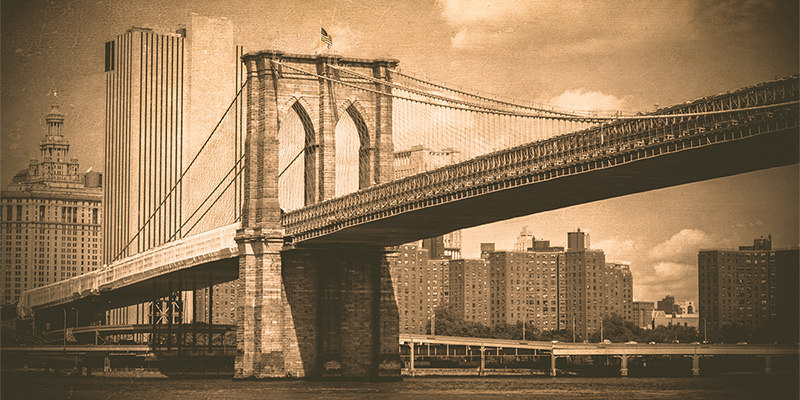It’s hard to miss the Brooklyn Bridge in New York City. It’s towers are no longer the tallest structures in the Western Hemisphere, but it’s been immortalized in movies. Plus, walking the bridge is on nearly every tourist’s checklist. Yet deep underneath the bridge is a wine-soaked history most of the country is unaware of.
In 1876, seven years after construction on the Brooklyn Bridge started and nearly seven years before it was completed, two underground wine cellars opened, one on the Manhattan side, one on the Brooklyn side. Each was the brainchild of bridge engineer John Roebling, and they were completed by his son Washington Roebling after John died.
The cellars were created as a solution to an alcohol problem, Nicole Jankowski reports for NPR. Brooklyn’s Rackey’s Wine Company and Manhattan’s Luyties & Co. liquor company were located right where the bridge needed to connect. Roebling was already faced with exorbitant costs for the construction — around $15 million, which is equivalent to more than $320 million today. So to mitigate the city’s costs, Roebling hollowed out rooms underground and did what any land owning New Yorker would do: He rented out the expensive real estate.
When the Brooklyn Bridge was completed, wine was already in the cellars. They were dark, damp, and cool, just like the best French cellars. Over time, the halls took on French street names, and grape vine paintings lined the walls.
There was more trust in the bridge below ground than there was above ground in the early days. Shortly after the opening, the New York Times reported, a woman fell while walking up the stairs. The woman behind her screamed, setting off a panic and a stampede of people. Twelve people were crushed to death, and 35 were wounded. Concerns subsided a bit after circus magnate extraordinaire P.T. Barnum took his 21 elephants and 17 camels across the bridge to prove it could handle the weight of people and motorcars.
But for 40 years, the real party was underneath the bridge, no matter what happened on top. Then in the late 1910s, as the temperance movement gained steam, all of the alcohol was taken out. Newspapers were stored there instead, although newspapers were hardly as suited to the damp cellars as wine. Wine returned after Prohibition, but after World War II, New York City took over management of the cellars for security purposes.
The government still owns the cellars under the bridge, and few people are granted access. An inscription on the wall, however, reminds the government officials passing through that the from the cellars inception, “they housed the choicest wines in New York City.”
h/t NPR

